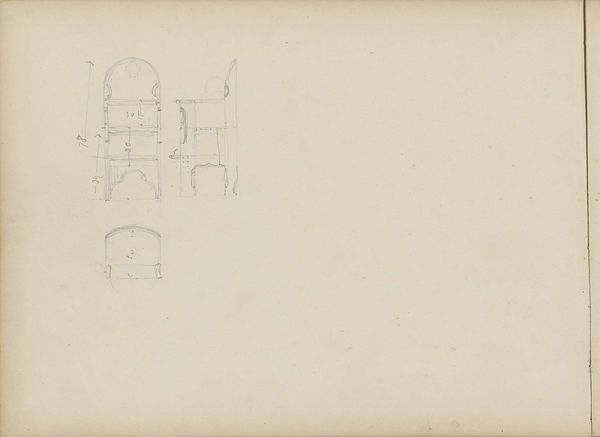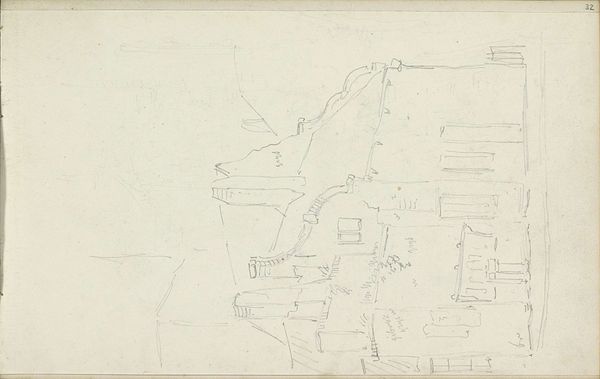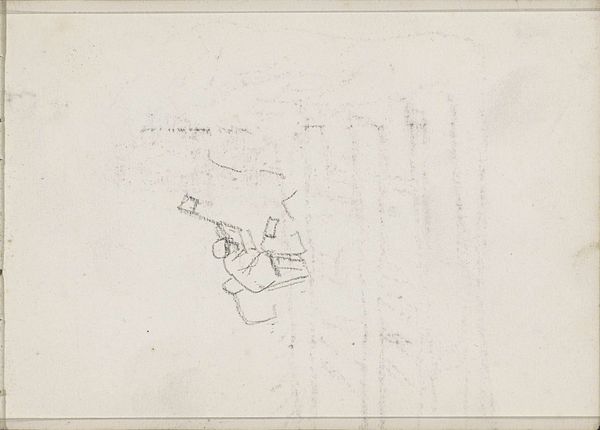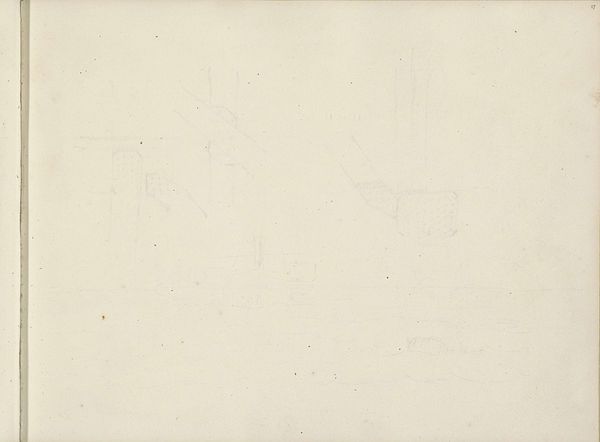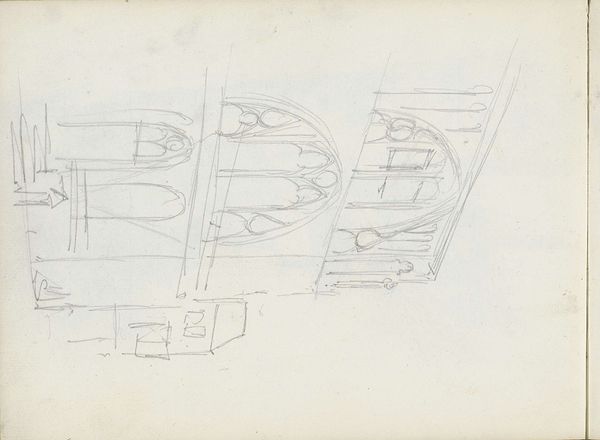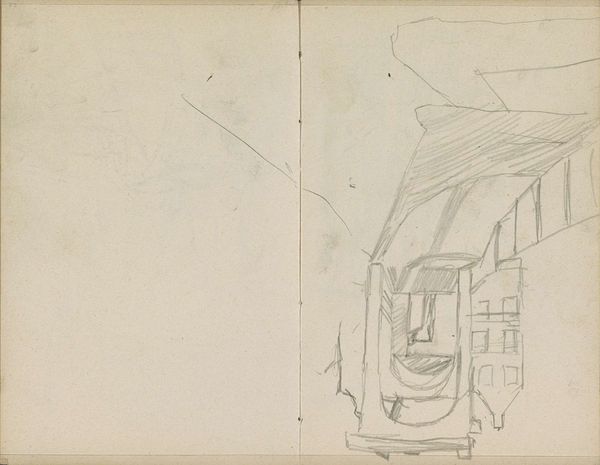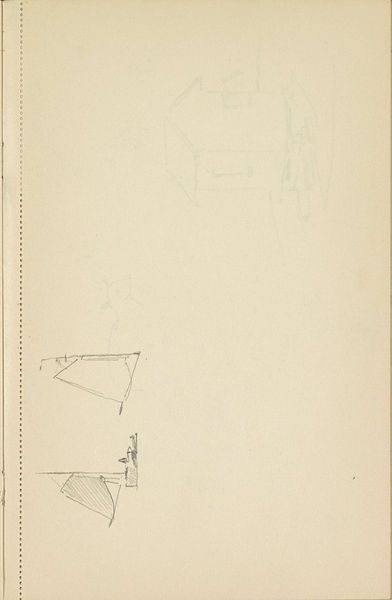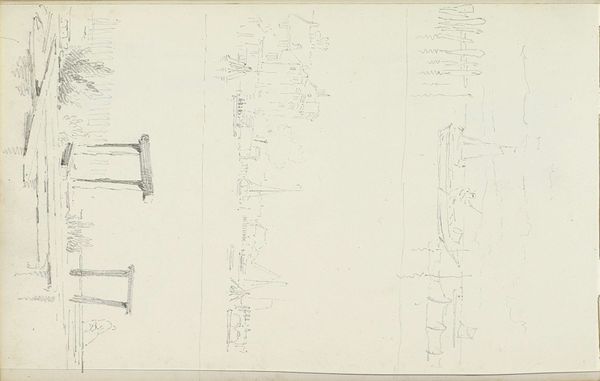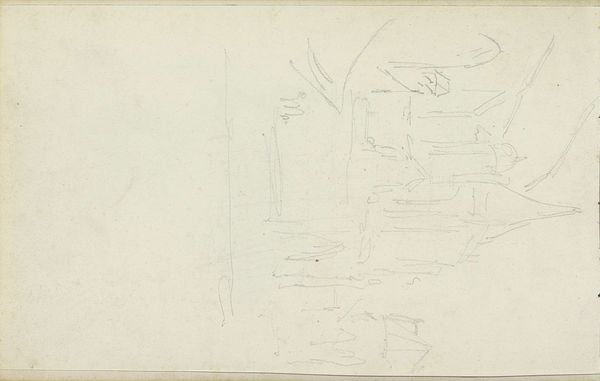
drawing, paper, pencil
#
drawing
#
aged paper
#
toned paper
#
light pencil work
#
ink paper printed
#
hand drawn type
#
paper
#
personal sketchbook
#
fading type
#
pencil
#
ink colored
#
sketchbook drawing
#
cityscape
#
sketchbook art
#
realism
Copyright: Rijks Museum: Open Domain
Curator: Welcome. Before us we have Adrianus Eversen's "Gevel met een verhoogde halsgevel," likely sketched sometime between 1828 and 1897. It's rendered in pencil and ink on paper, possessing the intimacy of a personal sketchbook entry. Editor: There's an almost ghostly quality to it. The light pencil work makes the building feel like it's emerging from the aged paper, a memory fading at the edges. Curator: Absolutely. Considering Eversen's broader body of work, known for its charming depictions of daily life, this drawing likely represents more than just architectural drafting. It echoes the rapidly changing urban landscape of the 19th century and the relationship between architectural styles and the lives they housed. We must consider how societal shifts informed the architectural choices reflected here. Editor: I'm immediately drawn to the hand-drawn lettering, however faded. It introduces a textual layer that prompts further consideration about representation itself. How does the combination of image and text enhance or obscure the intended meaning? The line quality speaks volumes, too. Those thin, precise lines define the elevation; the material almost disappears leaving only the structure behind. Curator: The choice to focus on the "halsgevel"—the raised gable—suggests a certain pride or fascination with the aesthetics of civic presentation. One can consider the economic status that kind of facade suggests. What narratives of power are etched into the stone, literally, of these cityscapes? Editor: Or perhaps Eversen was interested in the interplay of geometric forms—the rectangles of the windows, the curves of the gable. Notice how he uses light and shadow to articulate the planes, emphasizing its structural integrity, wouldn't you say? It’s the basic vocabulary of architecture. Curator: Perhaps, but architecture is rarely purely about form. We mustn't dismiss the social connotations. Think about it in relation to things like gentrification. Editor: I suppose you're right. Still, one cannot ignore the pure beauty of his approach to line and shading. Thank you, this glimpse into architectural poetics and their relation to evolving society and Eversen's masterful execution is most enlightening. Curator: Yes, and reflecting on architecture as not just a building but as a repository of cultural narrative expands how we understand urban evolution and its echoes through time.
Comments
No comments
Be the first to comment and join the conversation on the ultimate creative platform.
